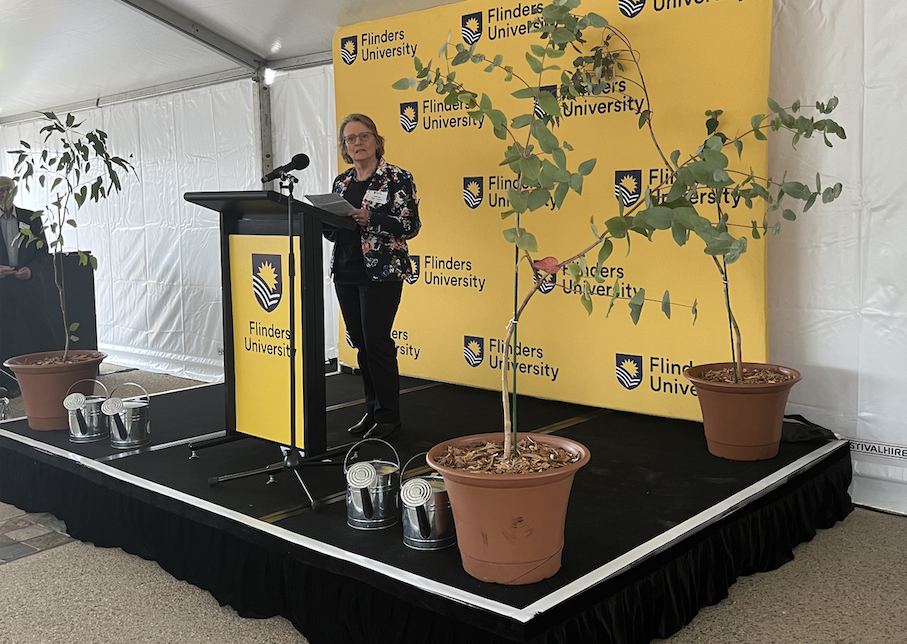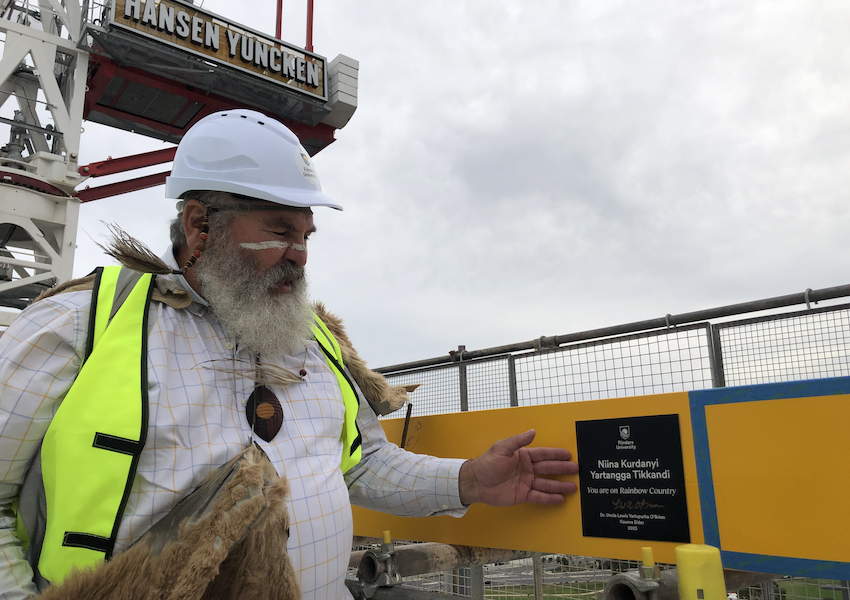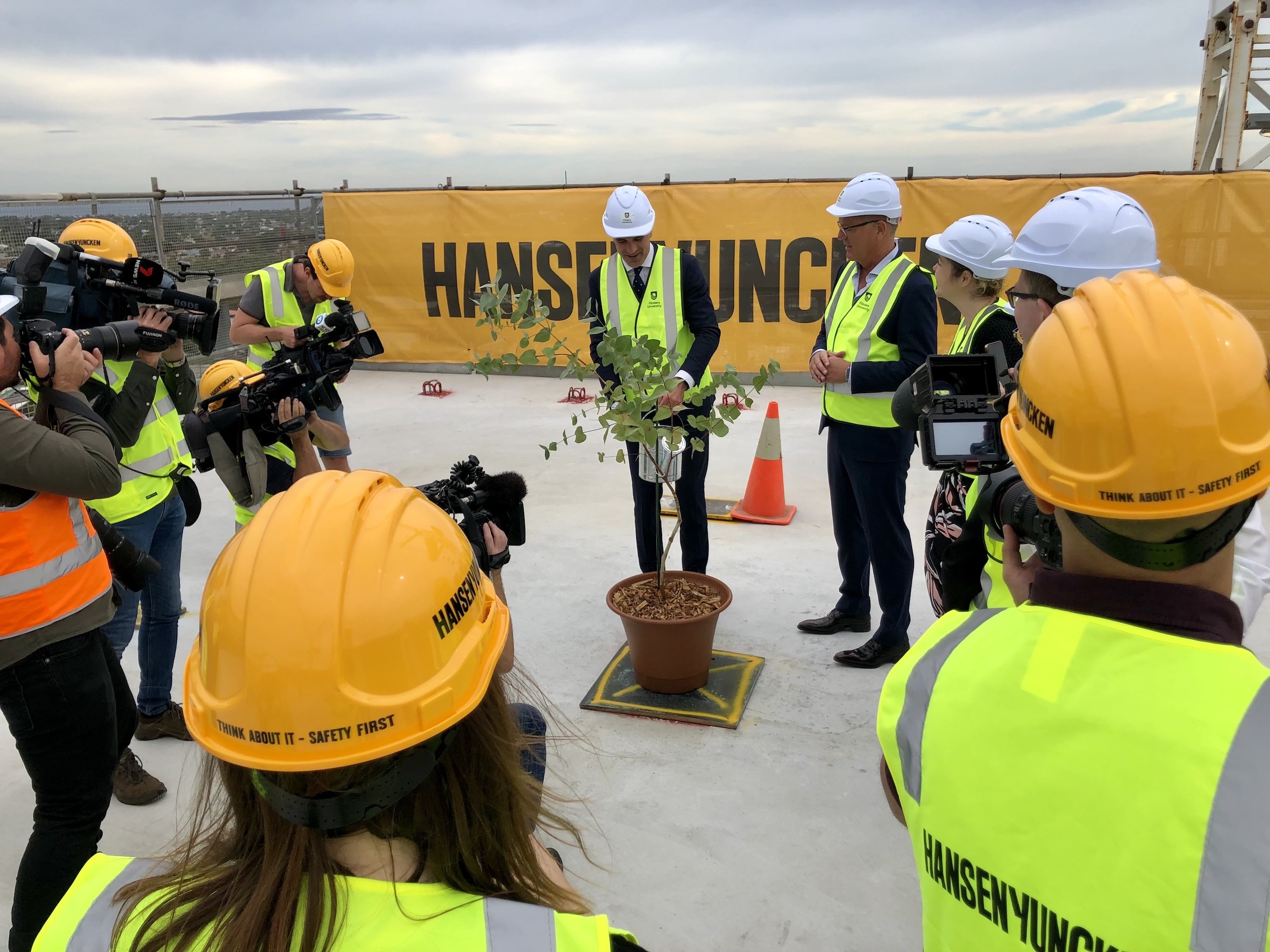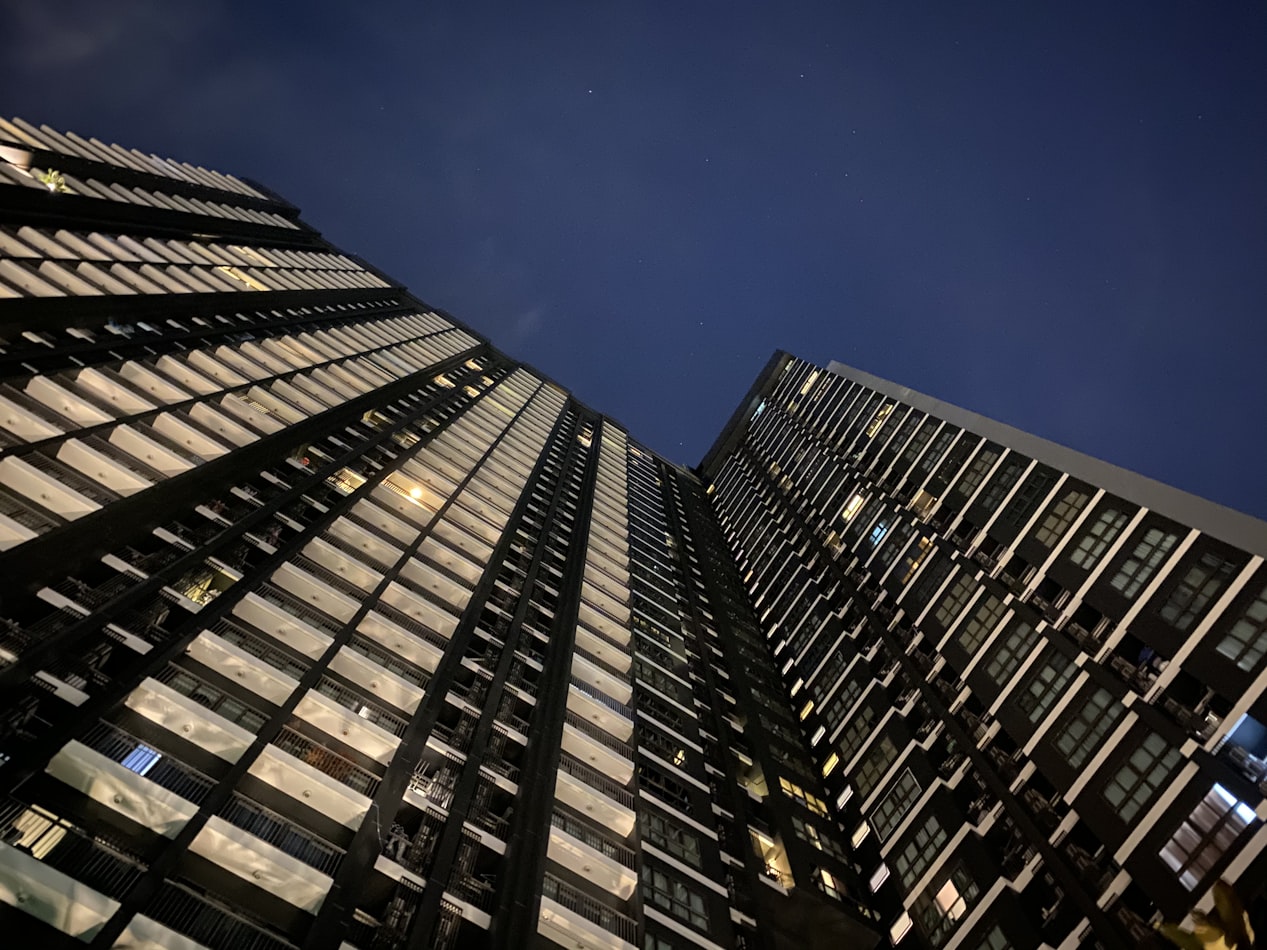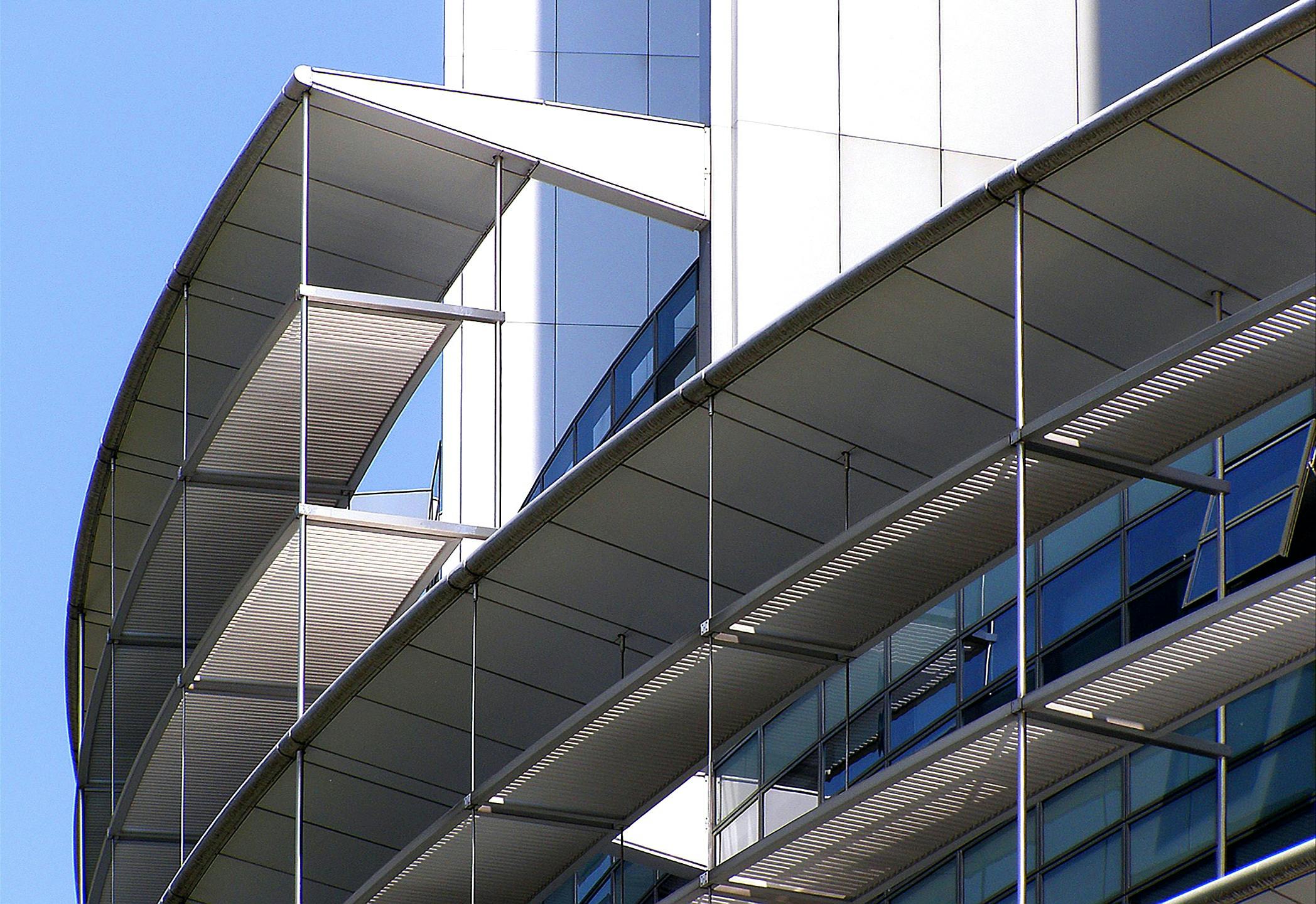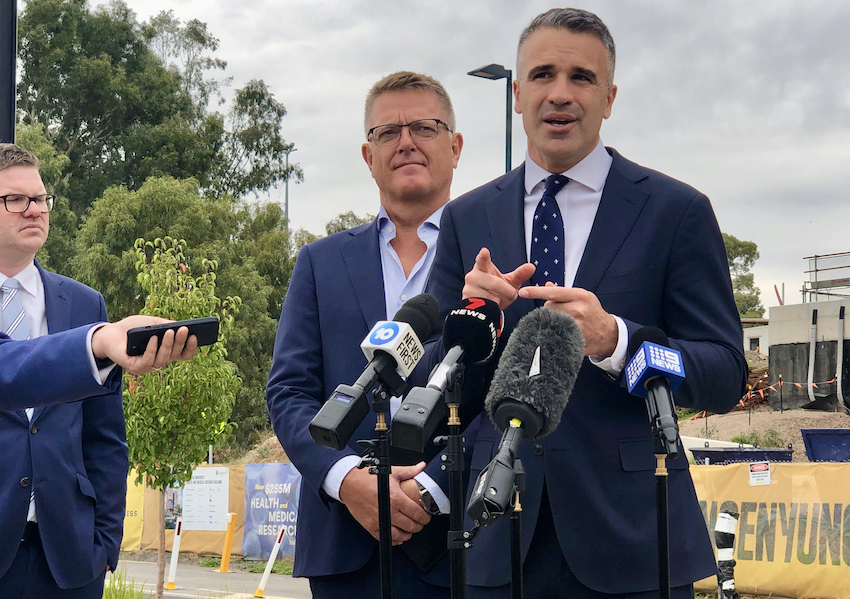
The new heart of South Australia’s largest integrated health and medical research precinct has soared to new heights, with the topping out of Flinders University’s $280m Health and Medical Research Building project at Bedford Park.
Climbing to its peak at 51m the purpose-built ten-storey building will be home for more than 600 medical researchers, clinicians, and professional staff, translating world-class research into better health and wellbeing outcomes for the community.
Building on more than 50 years of exceptional health and medical teaching and research, HMRB will feature one of South Australia’s largest suite of PC2-rated physical containment labs spread across five floors, and be equipped with state-of-the-art cell imaging equipment for use by researchers working on improving health, preventing disease and combating community health inequities with a focus on molecular biosciences, clinical translation and healthy communities.
Located adjacent to Flinders Medical Centre and Flinders Private Hospital, HMRB is the flagship building of the wider Flinders Village development – southern Adelaide’s biomedical research precinct that brings together research, education, accommodation, and amenity, and driving $1.5bn in economic activity, including 600 direct and 20,000 indirect jobs.
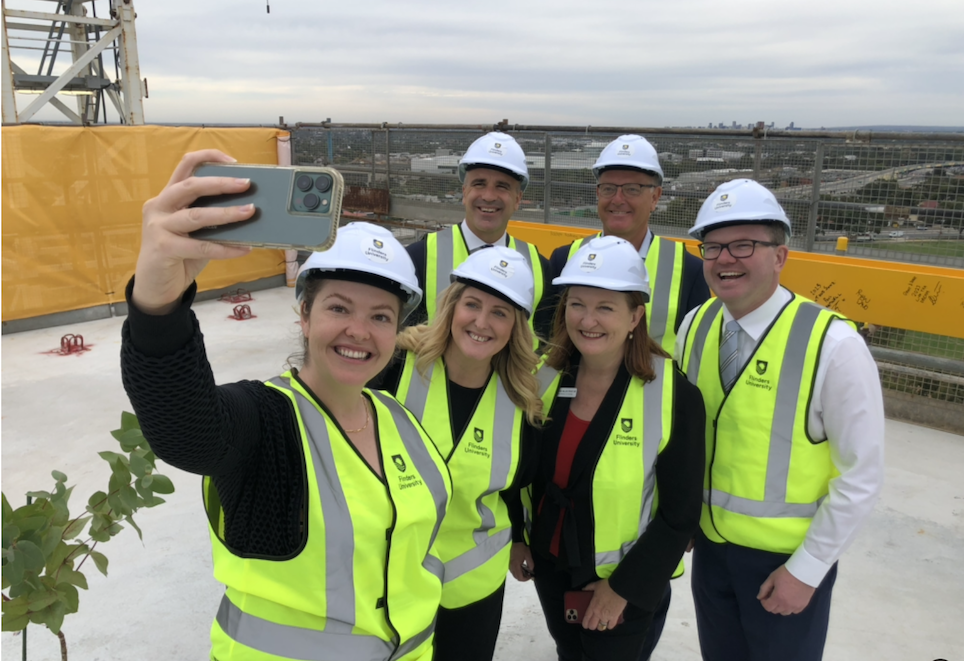
Set to be one of Australia’s most sustainable research institutions, HMRB will be 100% powered by electricity from renewable sources and will be built to a Gold WELL and LEED certification for sustainability and wellbeing. 100% of construction waste is being diverted from landfill during construction.
The facility has been designed with, and to serve, Aboriginal and Torres Strait Islander peoples, and is on track to complete in 2024.
Premier Peter Malinauskas and Vice Chancellor Professor Colin Stirling celebrated by signing the uppermost beam atop the building.
The Premier congratulated Flinders University on its visionary investment.
“Flinders’ Health and Medical Research Building will utterly transform the south and this biomedical precinct, while building on the University’s 50-year partnership with the Flinders Medical Centre, just metres away.
“The state-of-the-art facility will be a game-changer for health and medical research in South Australia, complementing the Government’s generational investment to rebuild the State’s health system.
“Today’s topping out is a great milestone for the advancement of health and medical research in our state, and I congratulate Flinders University for their research excellence, innovation and commitment to the health and wellbeing of our community” Premier Malinauskas said.
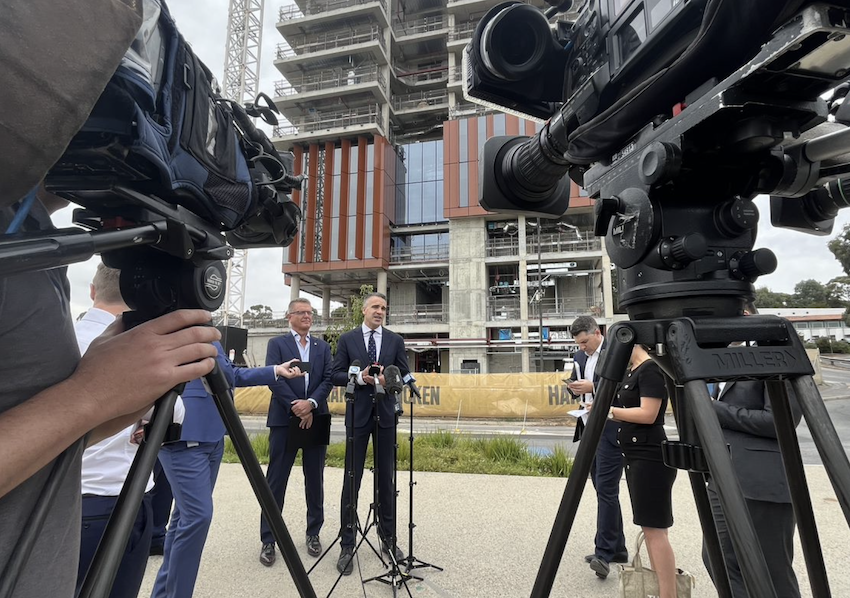
Professor Stirling said the building will support Flinders’ strong and continuing research growth.
“In the past five years, Flinders’ research income has grown by more than 145%, spearheaded by an expansion in the medical, nursing and health sciences disciplines that have recorded unprecedented growth in that time.
Building on our proud history as a pioneer in innovative health as the first medical school in the nation to be integrated into a public hospital, HMRB is a $280m gift by the University to the people of South Australia”, Professor Stirling said.
“Our research will tackle major health challenges of the 21st century, including early determinants of disease, the burden of chronic disease and pain, Indigenous health, maternal and child health, and the search for increasingly effective treatments for diabetes, infection and cancers,” he added.

Professor Claire Roberts, a placental biologist who leads the Pregnancy Health and Beyond Laboratory (PHaB Lab), said the HMRB will support vital research work which has outgrown its present premises.
“I have spent many years studying the dynamic crosstalk between the mother, the fetus and the placenta and how the things to which we are exposed while in the womb can profoundly affect our life’s health journey. The placenta is the baby’s lifeline and when it doesn’t develop properly complications occur including preeclampsia or high blood pressure, gestational diabetes and preterm birth.
“What your mother, and even your grandmother, ate, drank, smoked, inhaled and even rubbed on her skin could affect your health. This is known as epigenetics. Genetics and epigenetics explain why health and disease often run in families, with a greater risk of chronic diseases such as high blood pressure, diabetes, obesity and high cholesterol in women who had pregnancy complications, as well as their children.
“My colleagues and I are working on the most challenging diseases of our time, sharing research space with Flinders Medical Centre and Flinders Private Hospital, and recruiting research participants from the population of some 370,000 in Adelaide’s south that they serve. But we have outgrown the space available.
“Housing more than 600 basic, clinical and allied health research scientists together with data scientists and digital health experts, the 10-storey HMRB with its amazing state-of-the-art facilities provides exciting new collaborative research opportunities that will help us to make a difference to the health and wellbeing of people everywhere,” Professor Roberts said.
